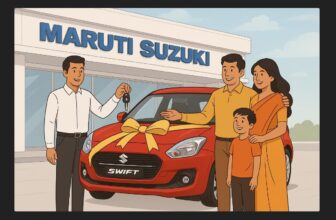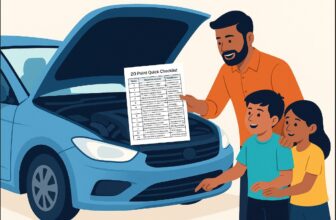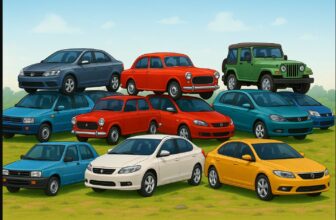Traffic congestion is a daily struggle for millions of Indians, especially in rapidly growing cities. With urbanization, rising vehicle ownership, and limited road space, Indian cities frequently experience long commute times, slow-moving traffic, and high pollution levels. According to various traffic reports, Indian metros are among the most congested in the world, affecting productivity and quality of life.
While the problem is severe, governments and urban planners are implementing various solutions, from metro expansions to smart traffic management systems. In this article, we explore eight Indian cities with the worst traffic and examine what’s being done to improve the situation.
1. Bengaluru – India’s Traffic Capital
Bengaluru consistently ranks among the world’s worst cities for traffic congestion. The average peak-hour speed is as low as 10 km/h in some areas, with major bottlenecks on Outer Ring Road, Silk Board Junction, and Whitefield—home to many IT parks.
Why is Traffic So Bad?
- Explosive IT sector growth leading to rapid vehicle population increase.
- Narrow roads and outdated infrastructure struggling to handle traffic volume.
- Lack of efficient last-mile connectivity in public transport.
What’s Being Done?
- Bengaluru Metro Expansion (Phase 2 & 3) to reduce dependency on cars.
- Construction of elevated corridors and new flyovers at critical junctions.
- Intelligent Traffic Management Systems (ITMS) to optimize signal timings.
2. Mumbai – Maximum City, Maximum Traffic
Traffic Situation
Mumbai is one of the slowest-moving cities in the world, with peak-hour speeds as low as 8-12 km/h. Western Express Highway, Eastern Express Highway, Bandra-Worli Sea Link, and Andheri-Ghatkopar are among the worst-hit zones.
Why is Traffic So Bad?
- High population density and limited road space.
- Few east-west connectivity routes, forcing long detours.
- Unregulated parking and bottlenecks at railway crossings and highways.
What’s Being Done?
- Mumbai Metro Expansion (Lines 2A, 7, and 3) to ease congestion.
- Coastal Road Project to improve north-south connectivity.
- New flyovers and road widening projects in key traffic zones.
3. Delhi – The National Capital’s Traffic Woes
Delhi’s Ring Road, ITO, and Gurgaon-Delhi Expressway witness heavy congestion daily. With over 1 crore registered vehicles, traffic congestion significantly contributes to air pollution and long commute times.
Why is Traffic So Bad?
- High vehicle ownership due to lack of reliable public transport in many areas.
- Frequent road construction projects causing temporary diversions.
- Preference for private cars despite an extensive metro network.
What’s Being Done?
- Delhi Metro Phase IV expansion to reduce car dependency.
- Odd-Even Rule to limit the number of cars on the road.
- Underpasses and flyovers at major intersections to ease bottlenecks.
4. Kolkata – A City Choked by Narrow Roads
Kolkata experiences some of the worst congestion, with average speeds dropping to 10-12 km/h during rush hours. Esplanade, Howrah Bridge, and Park Circus are the worst-affected areas.
Why is Traffic So Bad?
- Colonial-era road layouts with limited scope for expansion.
- Dependence on outdated public transport (trams, slow-moving buses).
- Encroachments by vendors reducing available road space.
What’s Being Done?
- East-West Metro Corridor project for better intercity travel.
- Redevelopment of tram lines for smoother urban commuting.
- Smart traffic signals and flyover projects at key junctions.
5. Chennai – Burdened by Rapid Urbanization
Chennai’s arterial roads, including Mount Road, OMR, and GST Road, face massive congestion daily. The problem worsens during monsoons, with flooding making roads unpassable.
Why is Traffic So Bad?
- Rapid urban expansion leading to rising vehicle numbers.
- Lack of integrated transport planning causing chaotic commutes.
- Poor drainage systems leading to severe waterlogging.
What’s Being Done?
- Chennai Metro Expansion into suburban areas to ease congestion.
- Widening of arterial roads and highway expansions for smoother movement.
- AI-based traffic management to optimize signals dynamically.
6. Hyderabad – Traffic on the Rise in the IT Hub
Hitech City, Kukatpally, and Madhapur are some of Hyderabad’s worst congestion zones. Despite the Outer Ring Road (ORR), traffic problems persist in key business districts.
Why is Traffic So Bad?
- Booming IT sector leading to heavy private vehicle usage.
- Limited public transit options beyond the metro and MMTS trains.
- Lack of lane discipline and poor enforcement of traffic rules.
What’s Being Done?
- Hyderabad Metro Phase 2 expansion for better coverage.
- New flyovers and road-widening projects.
- Stricter traffic law enforcement to reduce congestion.
7. Pune – One of India’s Fastest-Growing Traffic Nightmares
Pune’s traffic problems have worsened in recent years, especially in Hinjewadi IT Park and Shivajinagar.
Why is Traffic So Bad?
- Explosive population and vehicle growth.
- Delayed road infrastructure projects.
- Lack of efficient last-mile metro connectivity.
What’s Being Done?
- Pune Metro Phase 1 to connect key areas.
- Smart traffic management systems to improve flow.
- Electric buses and better public transport initiatives.
8. Ahmedabad – Rapid Expansion Leading to Traffic Troubles
SG Highway, CG Road, and Ashram Road face heavy congestion, especially during peak hours and metro construction.
Why is Traffic So Bad?
- High private vehicle ownership.
- Traffic violations and encroachments on roads.
- Urban expansion outpacing infrastructure growth.
What’s Being Done?
- Ahmedabad Metro project to improve connectivity.
- Expansion of BRTS (Bus Rapid Transit System).
- Smart traffic monitoring using AI.
Summary – 8 Indian Cities Where Traffic Is a Daily Struggle
Traffic congestion in India’s major cities is a growing crisis, affecting daily life, productivity, and air quality. While governments are taking steps like metro expansion, road decongestion projects, and smart traffic systems, these initiatives need faster implementation and better public awareness.
To create a smoother, more sustainable urban transport system, it’s crucial to:
- Encourage public transport & carpooling
- Improve enforcement of traffic laws
- Implement better urban planning strategies
With the right balance of government action and citizen participation, Indian cities can move toward a future with less congestion and better mobility.





